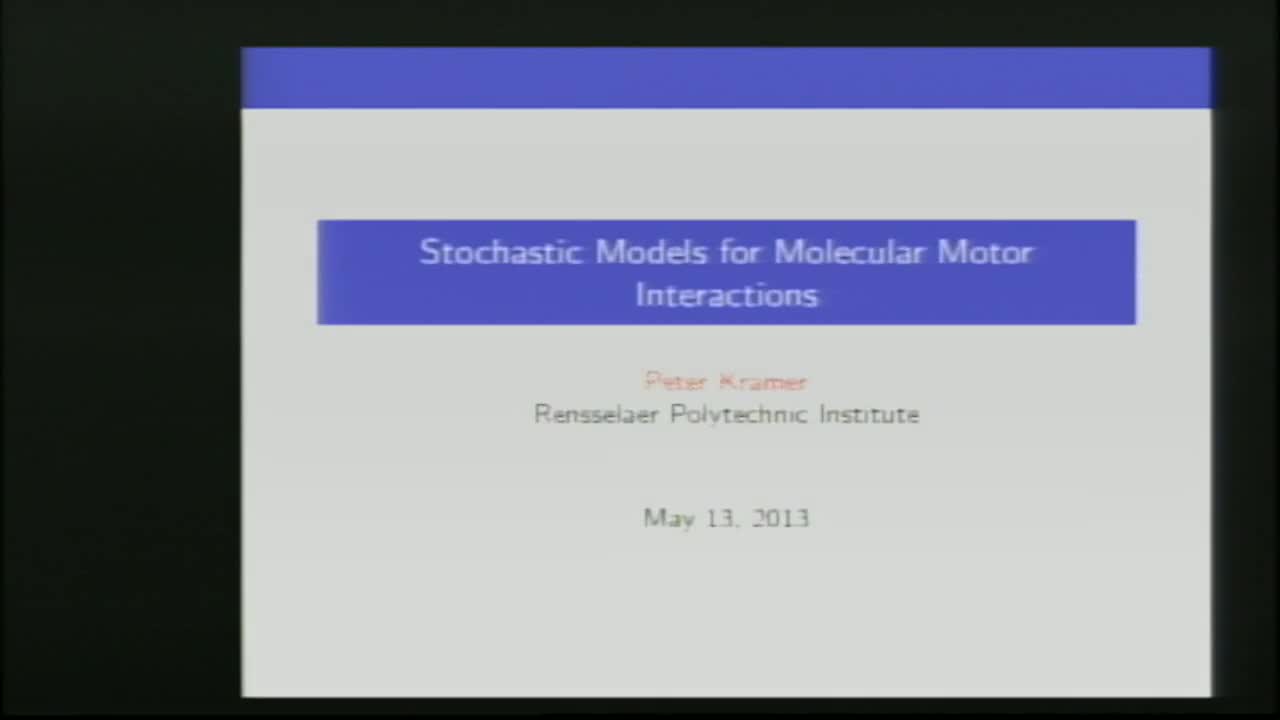Stochastic Modeling of Molecular Motors Across Scales
Presenter
May 13, 2013
Keywords:
- Molecular
MSC:
- 81V55
Abstract
Intracellular transport is driven primarily by molecular motor
proteins, such as kinesin and dynein, which convert chemical energy
(stored in ATP) to directed motion along microtubules. Mathematical
models of this process typically involve stochastic elements to
describe the progress of binding and other chemical steps in the
molecular motor stepping cycle, as well as for the interaction of the
spatial dynamics with thermal fluctuations in the environment.
Experiments and models have been pursued for the last 20 years to
explore the functioning and characteristics of single molecular motors
attached to a cargo load. Attention has turned more recently to
understand how intracellular transport operates in the presence of
multiple motors of various types, which is evidently relevant in vivo.
Of particular interest is understanding mechanistically at a systems
level how the various molecular motors, microtubule architecture, and
regulatory factors interact to achieve the functional goals of
intracellular transport. Achieving this goal appears to require the
integration of experimental data and theoretical models over at least
three scales of description, and the development of quantitative
relationships between in vitro and in vivo experimental results. I
will sketch some of the emerging conceptual challenges and
opportunities in the science of intracellular transport, and several
ways in which stochastic models and methods have been employed by
collaborators and other groups to contribute to our understanding of
this complex system. My recent and ongoing research in this area is
pursued jointly with John Fricks, Scott McKinley, Will Hancock, and
Avanti Athreya.
